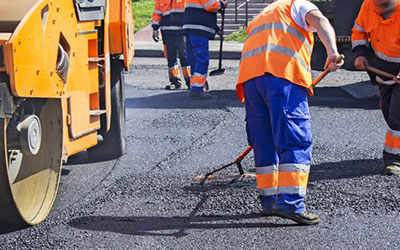Paving is used to transform your outdoor space, and roads are no exception. Roads are a vital part of almost everything we do. You cannot talk about proper governance and innovation in a sustainable transport system without mentioning paving the roadway. The roads unite the world, promote economic prosperity, takes us to our favorite travel destinations, among other important things.
Paving is used for the better appreciation of the roads we rely on for our daily activities. Today we take you through the actual process that goes into creating those beautiful roads.
 As much as the roads under construction might seem busy, This is a reasonably straightforward process. The reason for its simplicity is that required materials for paving are accessible in almost every asphalt plant within your region. Even though no specific certification is needed to oversee paving, the minds behind making our roads beautiful involve experts or a qualified asphalt pavement contractor. Accuracy is, therefore, necessary for this because the road impacts many people’s lives!
As much as the roads under construction might seem busy, This is a reasonably straightforward process. The reason for its simplicity is that required materials for paving are accessible in almost every asphalt plant within your region. Even though no specific certification is needed to oversee paving, the minds behind making our roads beautiful involve experts or a qualified asphalt pavement contractor. Accuracy is, therefore, necessary for this because the road impacts many people’s lives!
The job might be relatively simple, but it is a big one! The necessary steps involved in paving are as follows:
- Excavation – The accomplishment of a good Paving process depends on excavation. Excavation involves marking designated spaces where the pavement will be then exhume using tools like backhoes.
- The second step is filter fabric which protects the newly excavated area from sediment until a permanent asphalt is placed. The filter fabric brings out a complete protection effect by overlapping and stretching out of the bed.
- After complete protection of the bed, aggregate is coated at the edge of the bed using track equipment and carefully flattened for the stone recharge bed. The aggregate placement ought to be carried out with caution and directly not to destroy the filter fabric.
- The final step is the asphalt. Asphalt is poured in layers with variable viscosity. The layers are allowed to cool, then compressed with countable passes of a ten-ton static roller. It is also important to comply with the states’ or regional terms and conditions while paving.
Any good paving cost or an estimate should include the following. First, the contractor should do an on-site check in person to come up with an actual estimate and understand precisely what the job requires. Secondly, evaluate your Paving needs by ensuring that the asphalt paving process is a journey you and the contractor walk together. Your say, preference, and opinion matter a lot; therefore, inquire about things you aren’t sure and understand, paving to the end. The discussion of water drainage should be on the list to ensure your pavement’s longer lifespan and avoid premature cracking. Also, talk about materials for the job, such as types to be used. Make sure the contractor is quoting the correct asphalt materials with you. Finally, asphalt requires a follow-up stage and right customer service as this helps you understand the work timeframe, and in case of any changes, you can reach the contractor.
There is so much you could be unaware of about Paving. However, we take pride in teaching you what you need to know about asphalt with the above insights. Use the above stages of paving to make your roads more attractive and safer for users!







